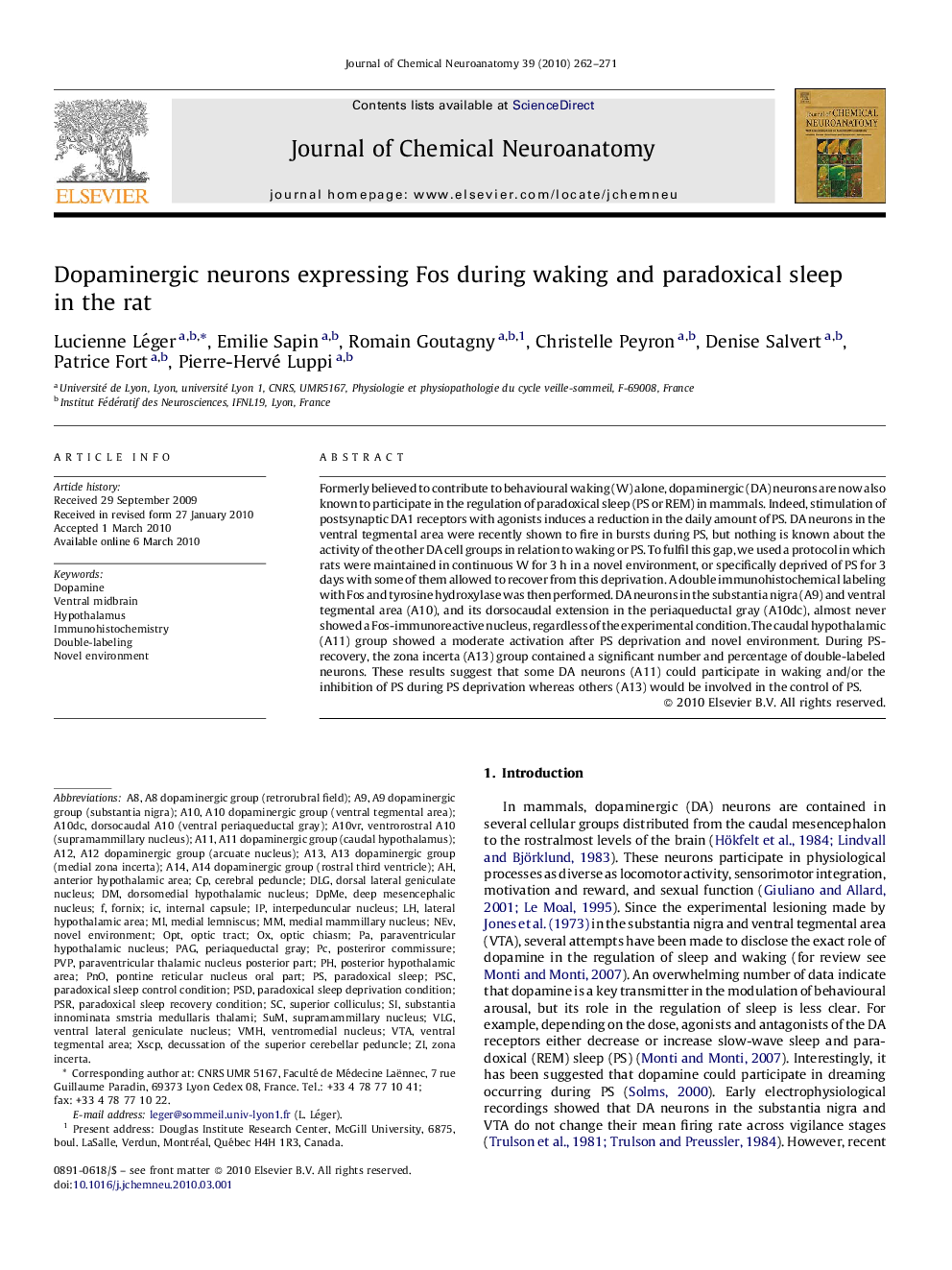| Article ID | Journal | Published Year | Pages | File Type |
|---|---|---|---|---|
| 1989138 | Journal of Chemical Neuroanatomy | 2010 | 10 Pages |
Abstract
Formerly believed to contribute to behavioural waking (W) alone, dopaminergic (DA) neurons are now also known to participate in the regulation of paradoxical sleep (PS or REM) in mammals. Indeed, stimulation of postsynaptic DA1 receptors with agonists induces a reduction in the daily amount of PS. DA neurons in the ventral tegmental area were recently shown to fire in bursts during PS, but nothing is known about the activity of the other DA cell groups in relation to waking or PS. To fulfil this gap, we used a protocol in which rats were maintained in continuous W for 3Â h in a novel environment, or specifically deprived of PS for 3 days with some of them allowed to recover from this deprivation. A double immunohistochemical labeling with Fos and tyrosine hydroxylase was then performed. DA neurons in the substantia nigra (A9) and ventral tegmental area (A10), and its dorsocaudal extension in the periaqueductal gray (A10dc), almost never showed a Fos-immunoreactive nucleus, regardless of the experimental condition. The caudal hypothalamic (A11) group showed a moderate activation after PS deprivation and novel environment. During PS-recovery, the zona incerta (A13) group contained a significant number and percentage of double-labeled neurons. These results suggest that some DA neurons (A11) could participate in waking and/or the inhibition of PS during PS deprivation whereas others (A13) would be involved in the control of PS.
Keywords
PAGA13A10VLGDpMeA14A11DLGVTANEVPnOA12XSCPOPTPSCA10dcPSDPSRPVPVMHventral midbrainImmunohistochemistryDouble-labelingperiaqueductal grayParadoxical sleepoptic tractDopamineSuperior colliculuscerebral pedunclefornixdecussation of the superior cerebellar pedunclemedial lemniscusSUMNovel environmentzona incertalateral hypothalamic areaanterior hypothalamic areaPosterior hypothalamic areaventral tegmental areainterpeduncular nucleusSupramammillary nucleusVentromedial nucleusMedial mammillary nucleusdeep mesencephalic nucleusdorsal lateral geniculate nucleusdorsomedial hypothalamic nucleusparaventricular hypothalamic nucleusventral lateral geniculate nucleusHypothalamusoptic chiasminternal capsule
Related Topics
Life Sciences
Biochemistry, Genetics and Molecular Biology
Biochemistry
Authors
Lucienne Léger, Emilie Sapin, Romain Goutagny, Christelle Peyron, Denise Salvert, Patrice Fort, Pierre-Hervé Luppi,
